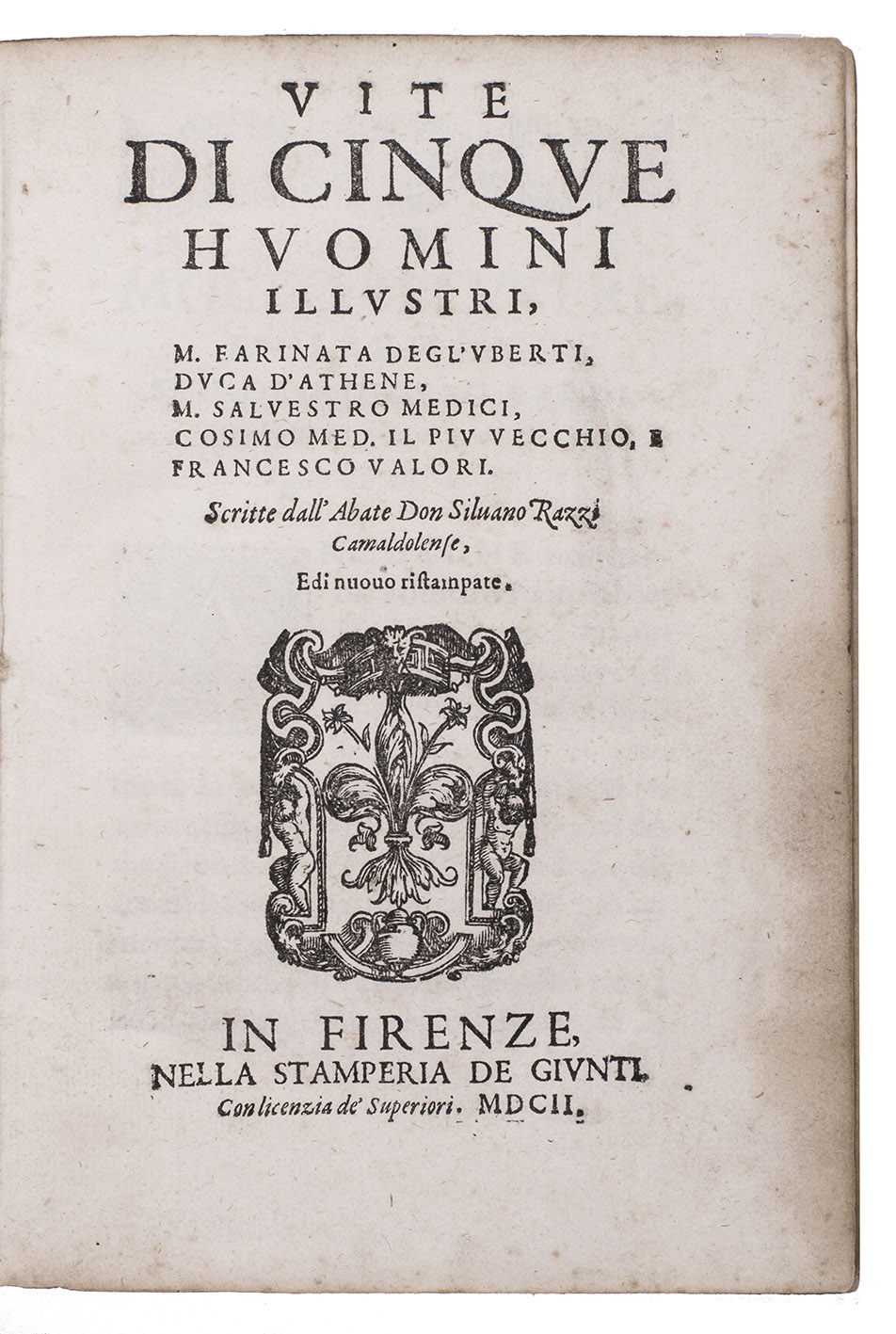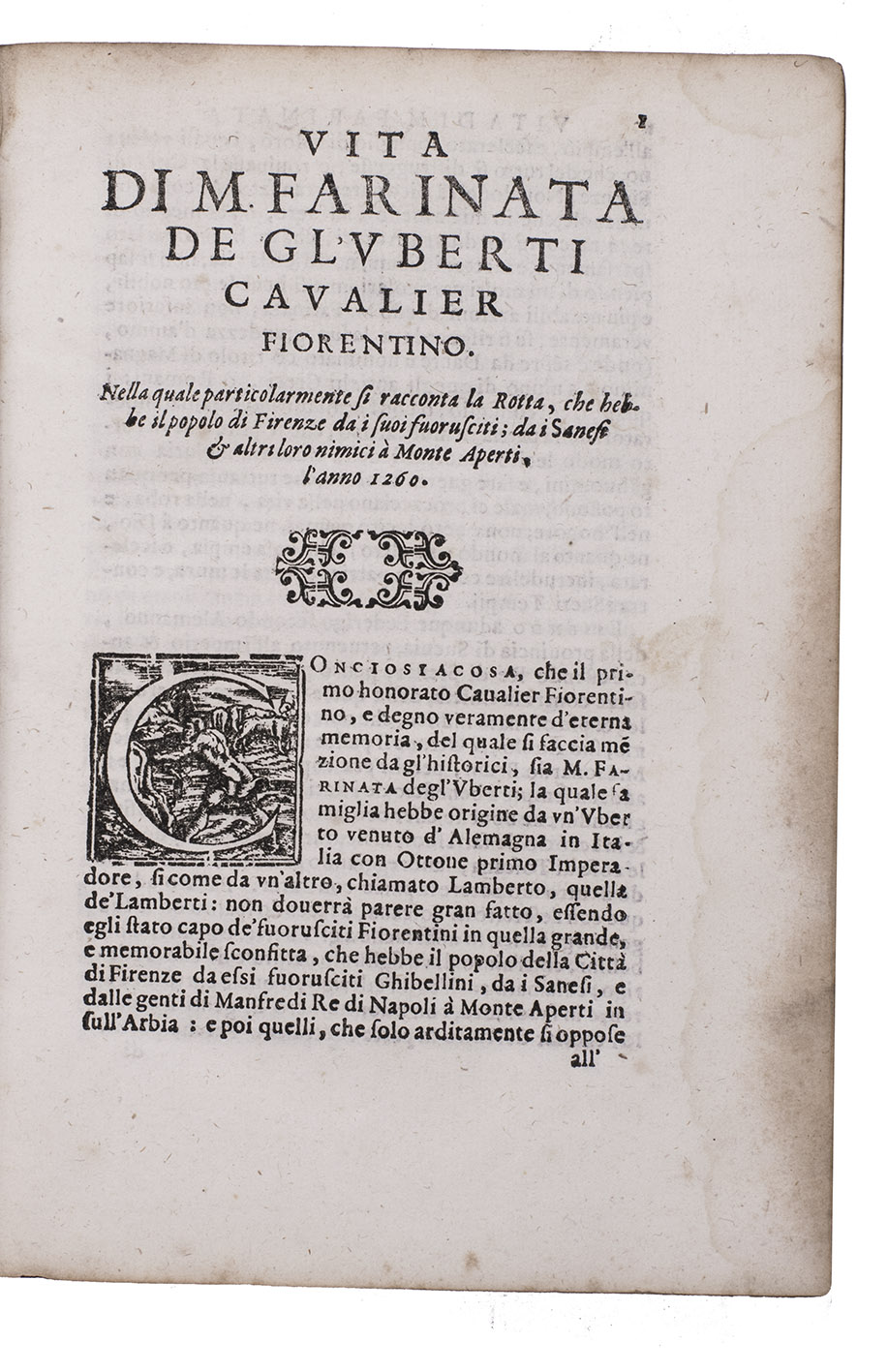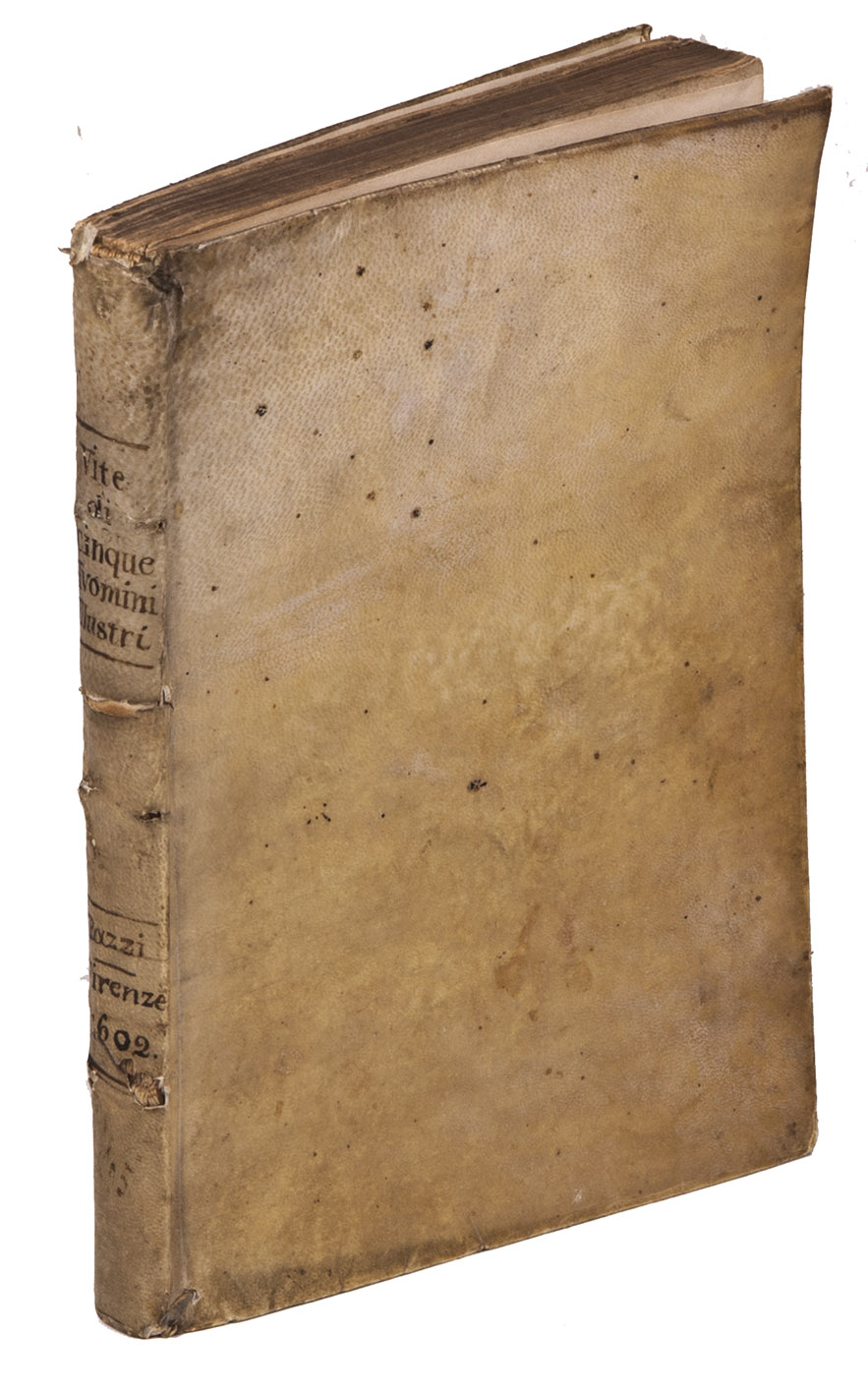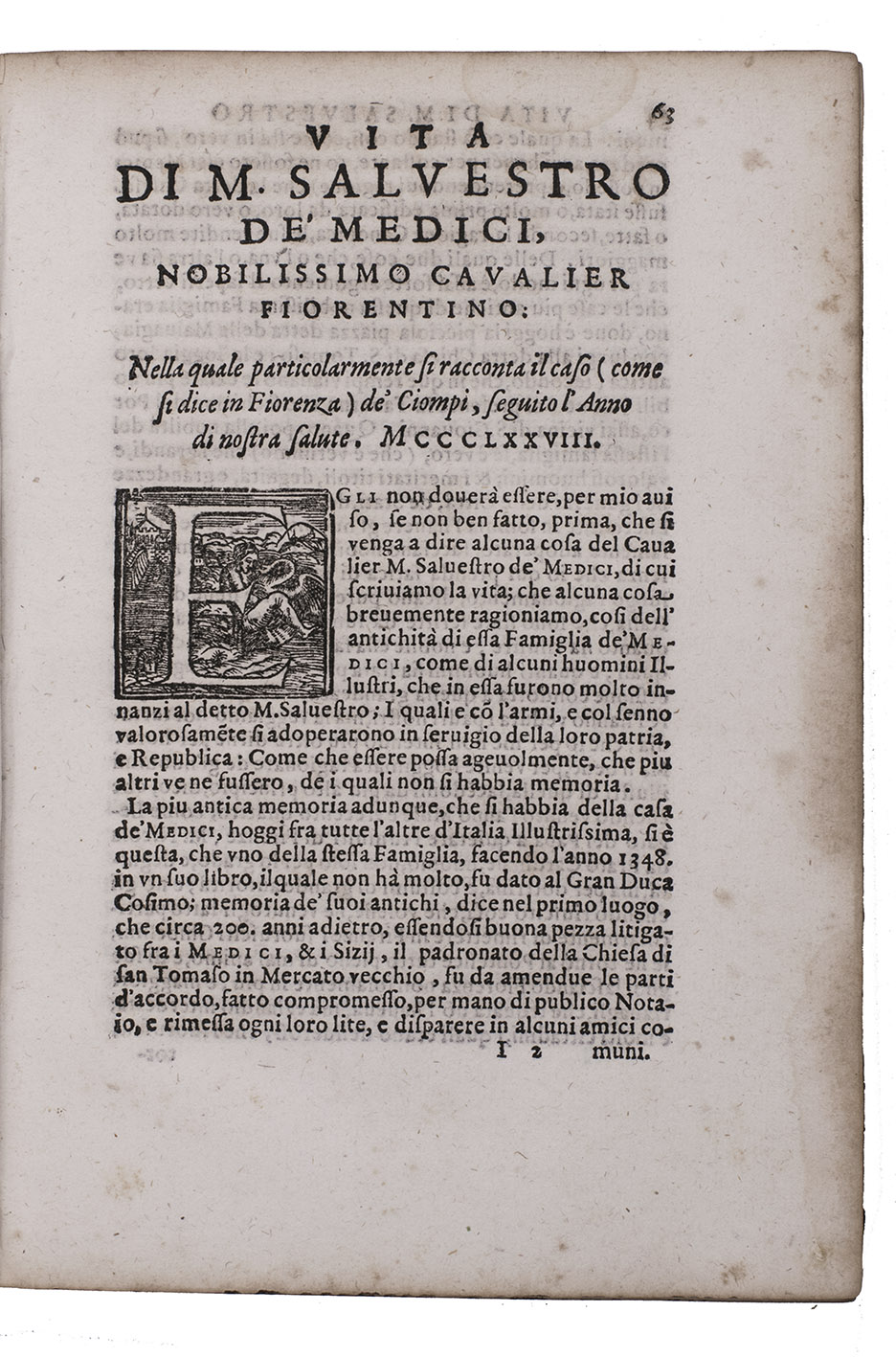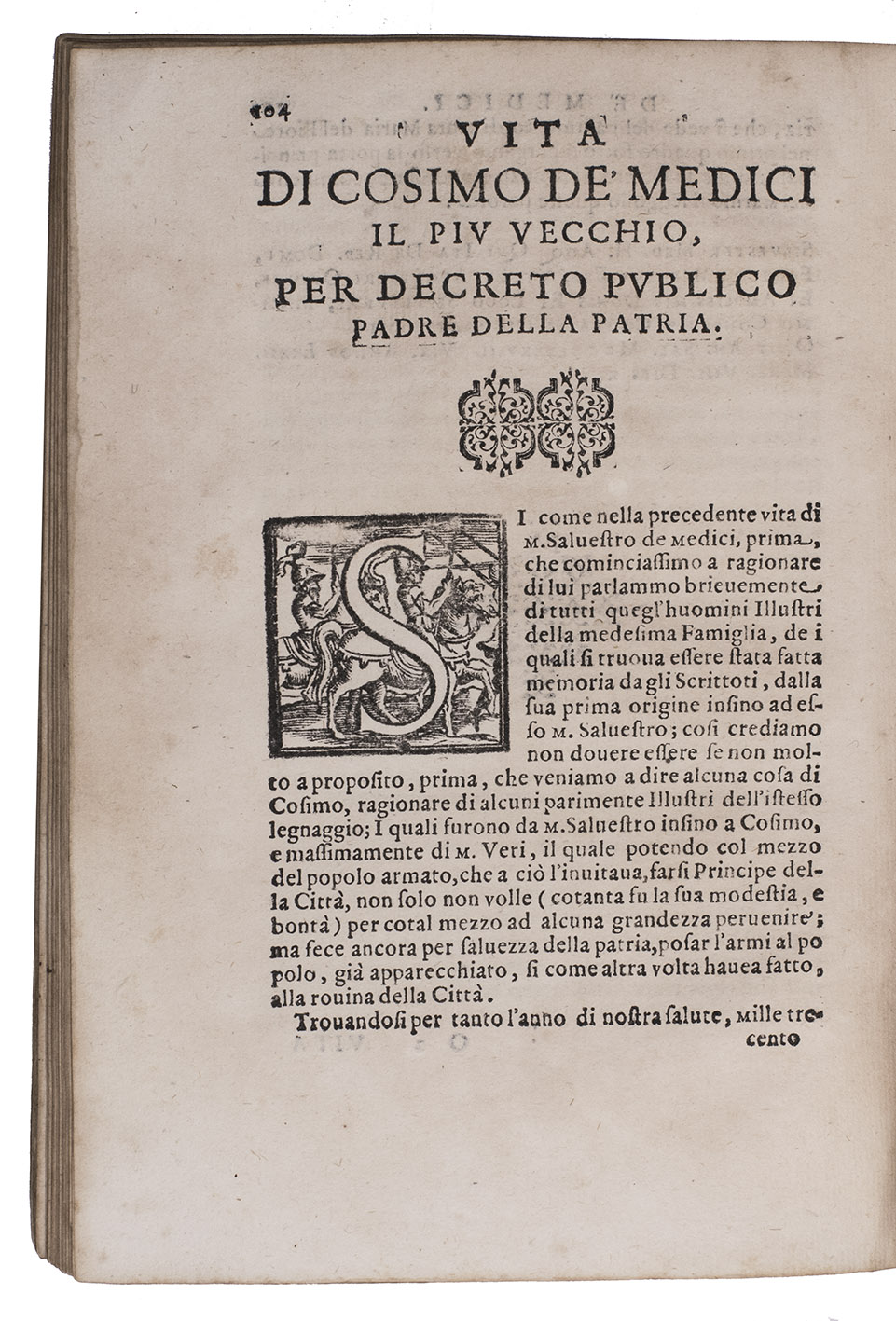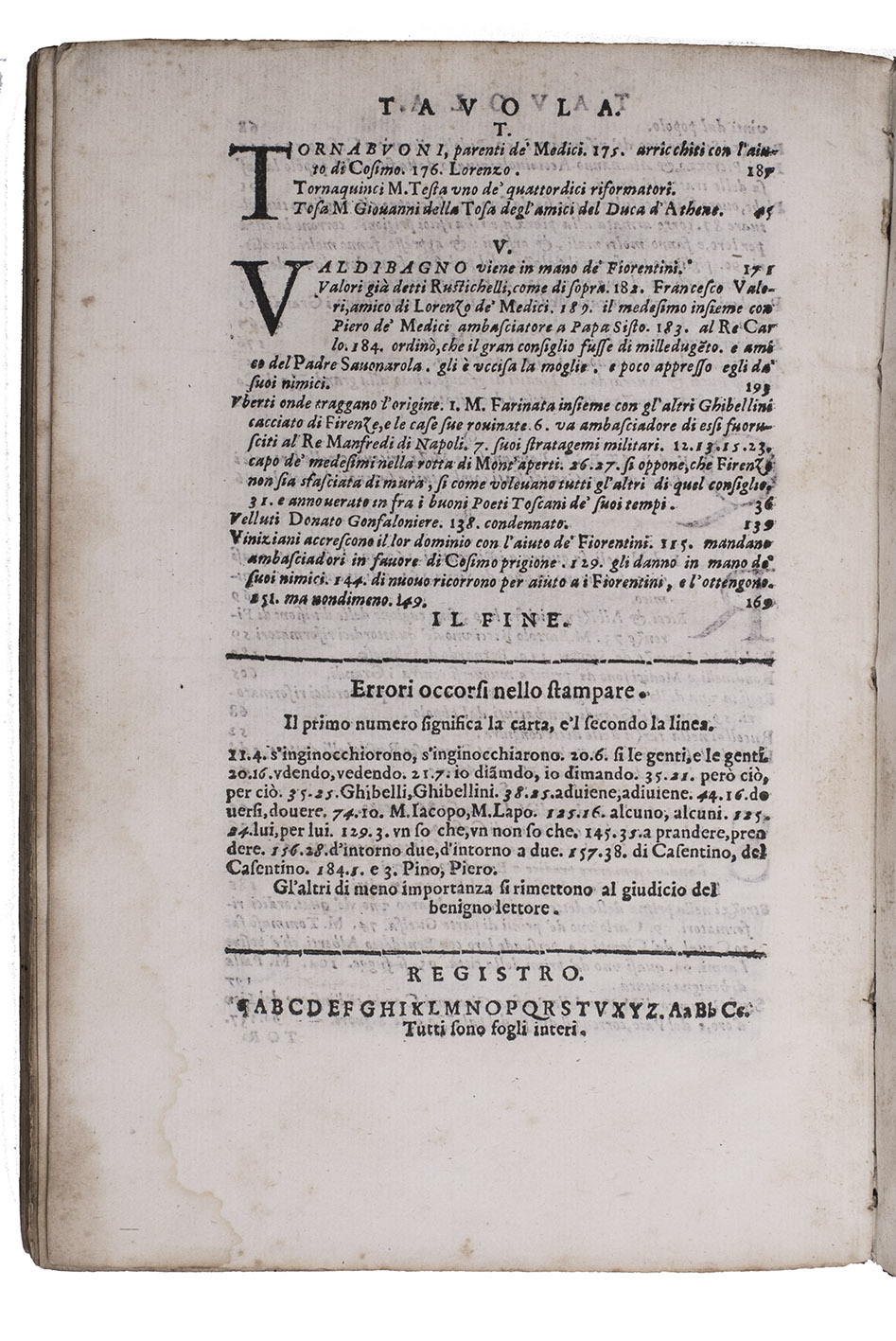RAZZI, Silvano.
Vite di cinque huomini illustri, M. Farinata degl'Uberti, Duca d'Athene, M. Salvestro Medici, Cosimo Med. il piu vecchio, e Francesco Valori.
Florence, Bernardo Giunta the younger and heirs of his brothers, 1602. 4to. With the Giunta's woodcut device on the title-page. 17th-century(?) sheepskin parchment, later endpapers. [12], 198, [6] pp.
€ 1,750
Biographies of five "illustrious men", all known primarily for their positions of power in Florentine politics, in the original Italian, by Silvano Razzi (1527-1611). Valori was added for the first time in the present second edition. Razzi's selection is interesting for including people whose power proved short-lived or who worked largely behind the scenes: all five changed the course of Florence's history with important long-term consequences, but only Cosimo de' Medici is a household name.
Farinata (or Manente) degli Uberti (1212-1264) ruled Florence from 1239 to 1250, when the Guelphs exiled him, but he recaptured Florence in 1560. He was posthumously convicted of heresy and appears in Dante's Inferno, burning in hell.
Gualtieri VI (1304/05-1356) is best known as the ruler of Florence in 1342. He rescued Florence from a severe financial crisis, but did so in such a heavy-handed manner that he quickly made enemies and was forced out of office after less than a year, though he had been appointed for life.
Salvestro de' Medici (ca. 1331-1388), who ruled Florence on and off from 1378 to 1382, also opposed the Guelphs, rallying the support of the guilds (which included the bankers) against them.
Cosimo de' Medici the elder (1389-1464), head of the great banking family and de facto ruler of Florence for half a century, was also one of the greatest patrons of the arts, architecture and scholarship of all time.
Francesco Valori (1439-1498) had supported Lorenzo de' Medici, ruler of Florence from 1469, but supported the zealous reformer but also violently moralistic Dominican Girolamo Savonarola against the Medici when Lorenzo died in 1492.
With a tear along the fold at the foot of bifolium 2A1.4, some small and mostly marginal stains in the foot of the gutter margin of 2 leaves, minor foxing, and some water stains in the fore-edge margin, but still in good condition and with generous margins. Pettas, Giunti of Florence, p. 720; USTC 4034226; cf. Adams R231 (1st ed., with only 4 biographies).
Related Subjects:
